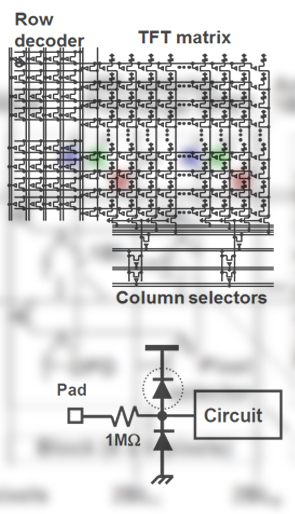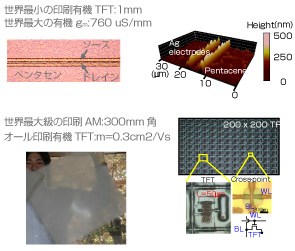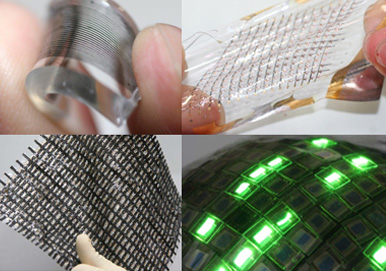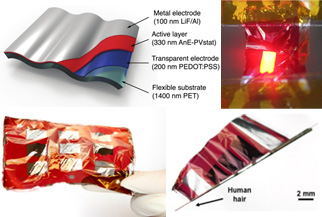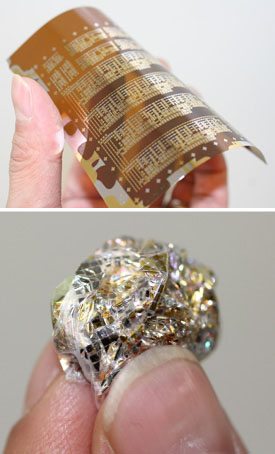
We established new technologies [e.g., lamination technology for organic nanomolecular layers, technology to control an organic semiconductor/insulator interface, technology to control the physical properties of organic molecular materials, and technology to design organic circuits (Nature Comm.2012, Nature Mater. 2010,2011, Science2009, Appl. Phys. Lett.2009, MRS Comm.2012)]to substantially improve the performance of organic transistors. In addition, we explored the field of flexible electronic devices fabricated using organic transistors before the rest of the world. In particular, we were the first to realize an ultraflexible organic transistor (bending radius,≤10 μm) thathasa high electrical performance (mobility of 3.2 cm2/Vs when driven at 2 V) exceeding that of amorphous siliconby combining various technologies related to materials, physical properties, processes, and circuit design in a concerted manner [Nature2013, Nature Mater.2010].
Thus far, high performances in terms of response speed (propagation delay time per stage, 22 μs; IEEE EDL2011), mobility at a low-voltage (3.2 cm2/Vs; Nature2013), mechanical flexibility (5 μmradius of curvature; Nature2013), heat resistance (250 oC;Adv. Mater.2013), and low noise (10−24 A2/Hz) were realized. We also established a fabrication process for organic transistors with the world’s highest performances in terms of the above-mentioned indices.









